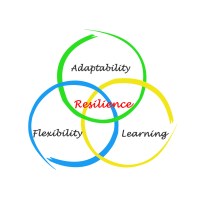
I recently learned about three kinds of fun on a scale:
- Type 1 Fun, where the thing you do, this current experience, is fun right now.
- Type 2 Fun, where you thought this thing would be fun, but you get frustrated and possibly miserable as you go through it. Only in retrospect, when you see the outcome, do you recognize you had fun.
- Type 3 fun is the kind of experience where you might even say out loud, “Really? What was I thinking?” Even in retrospect, it’s not fun.
The fun scale appears to be mostly about physical experiences. IMNHO (in my never humble opinion), that’s way too limiting. Instead, I think of all learning as Type 2 fun.
Learning Can Be Fun
Once I learned how to read, I realized that reading could be fun. And that learning could be fun. Unfortunately, too many “educational” books are so damn boring, they make learning a chore, not fun. (Just imagine if kids had math books that described the necessary strength for fantasy characters, such as Peter Parker, that challenged kids to think about math, chemistry, and physics.)
Once I discovered computer programming, I realized learning could be fun. That’s because I learned in several dimensions:
- The direct application of what did and did not work in my code. (The what did work was Type 1 fun.)
- How I learned to create small experiments to discover why I had errors in my code. (That was both Type 1: how to create small experiments, and Type 2, the actual learning.)
- Finally, my feelings of triumph after I completed an assignment. (Definitely Type 2.)
I felt that way all the way through my hands-on years.
This kind of learning depends on relatively short feedback loops. The longer it takes for us to find “The Answer,” the more frustrating our learning can be. That’s the problem with ambiguity—it takes a long time to learn about this thing. We become frustrated. Sometimes, we give up. (Which might be fine, and is often, not much fun.) If we can persevere, we can consider a new path.
Perseverance Matters to Resilience
Once I started to lead projects and teams, my feedback loops got a lot longer. That’s because I could not do all the work for the people I led. Instead, I had to create an environment where they could learn and work together. It’s the same thing with my consulting and teaching clients. I can offer advice all I want—but they have to do the work. We often debrief the work they did so they can learn from it.
Longer feedback loops expose these problems:
- We need to stick with the learning, but vary how we learn. That’s partly adaptability and partly flexibility in learning.
- The more flexible we are in how we learn, the more we might learn. That increases our adaptability.
- We need all of this to create more resilience.
If we give up too early, we don’t learn. No Type 2 fun.
Learning, with adaptability and flexibility, helps us earn our Type 2 fun.
We Earn Type 2 Fun
I love doing fun things, that Type 1 fun. But the Type 2 fun challenges me, which creates more adaptability and resilience.
The next time you realize something challenges you, see if you can reframe that to Type 2 fun. That learning might offer you more resilience, too.